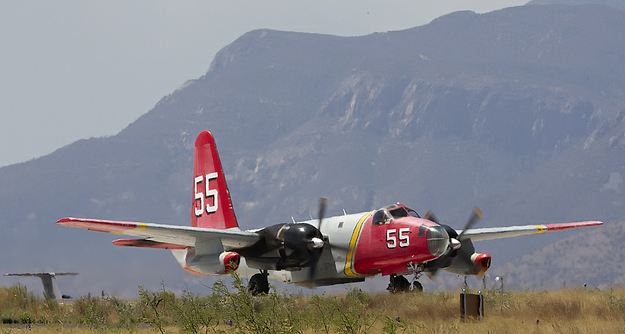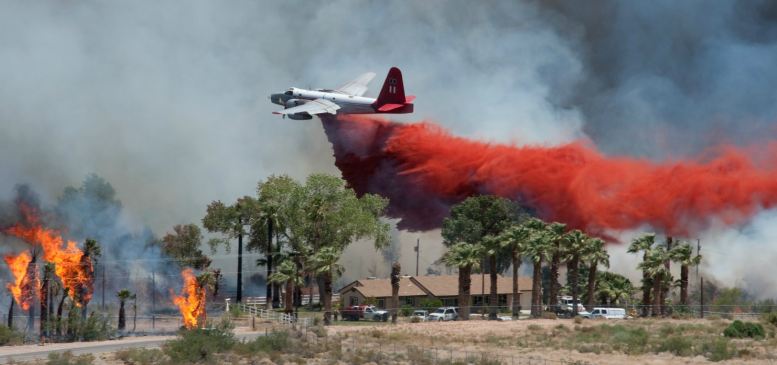
UPDATED at 5:01 p.m. MT, June 4, 2012
Air tankers grounded
The day after the crash of Air Tanker 11 on Sunday which killed two pilots, all air tankers are grounded, we were told by Jennifer Jones of the U.S. Forest Service at Boise. Neptune Aviation, the company that operated Tanker 11, took the initiative to ground their remaining fleet of eight air tankers. Most likely the company took the step in order to help their crews and staff cope with their loss, but we are waiting for a return call from Neptune to confirm the exact reason.
In addition, following the emergency landing in which one of the three landing gears did not deploy on Minden Air Corp Tanker 55 on Sunday, the federal government is conducting an inspection on Minden’s other air tanker, Tanker 48, making it unavailable.
The result, at least for today, is the entire fleet of nine large air tankers is not available.
As these 50-plus year old aircraft age even more, the U.S. Forest Service’s commitment to putting all of their eggs in one or two baskets makes it more likely that total or near-total grounding of the air tanker fleet can occur again after a crash or when a defect is discovered. Eight of the remaining air tankers are Korean war vintage P2Vs, and one is a BAe-146 delivered in 1986. Eight are operated by Neptune, and Minden has one left.
More details about the crash
The Salt Lake Tribune is reporting a few more details about the crash of Tanker 11. Here is an excerpt:
…An eyewitness told KUTV that moments before the plane crashed, it was flying very low, clipping the tops of trees.
Iron County Sheriff Mark Gower said Monday afternoon that it appeared that the right wing tip hit the ground, causing the plane to go into a cartwheel. The plane was destroyed, the debris spread across a 500-to-600 foot area.
“You could see it was a very violent crash,” Gower said.
The cause of the crash remained under investigation Monday and National Transportation Safety Board investigators were on the way to the remote and rugged crash site Monday afternoon.
The Missoulian has an article about Todd Tompkins, 48, one of the pilots killed in the crash. The article also has some photos of the crash site.
More aerial resources becoming available?
There is a rumor that Tanker 911, a DC-10 operated by 10 Tanker Air Carrier is being brought on contract, but at 3:36 p.m. MT, June 4, we talked with Rick Hatton, the President of the company, and he has not been notified of this development. He said he also heard the rumor, and was hoping that my call was, instead of me, a contracting officer with the USFS. The DC-10 carries 11,600 gallons of retardant, five times more than a P2V and four times more than a BAe-146.
Jennifer Jones, a spokesperson for the USFS in Boise told us that they have not hired a DC-10, but they are bringing on a CV 580 that is on contract with the state of Alaska, and they are exploring possibilities of bringing on some Type 1 helicopters early, but as far as she knows that has not happened yet.
The US Forest Service has shown no interest recently in awarding exclusive use contracts to the Very Large Air Tankers (VLAT) such as the DC-10, 747, or Martin Mars, and has only offered Call When Needed contracts. It is difficult or impossible to maintain any large aircraft and a very specialized crew when there is no assurance that it will be used. The USFS is missing the boat if they do not utilize these assets, period, but especially under these conditions.



